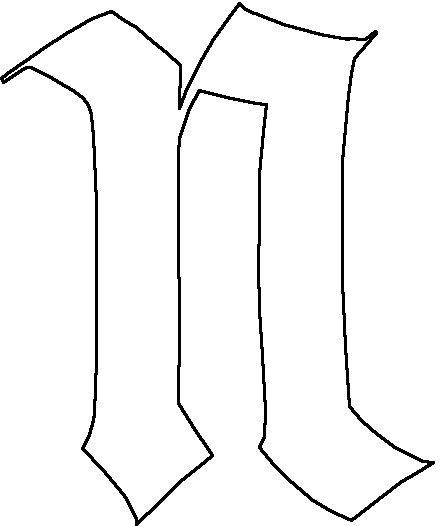I am importing an outline into Glyphs. When I try to import the file, it displays the error message “The EPS file is not valid or can’t be parsed.” I created the EPS file in Photoshop Elements, and selected Preview None and Encoding Binary. Image interpolation is not checked. What am I doing wrong? Thanks.
You could open the file in Illustrator and copy/paste the outlines to Glyphs.
Do the .eps files contain bezier paths? or only image data? Can you send me one of the .eps files?
The forum doesn’t accept EPS files, so I have uploaded the image in JPG format.

Please send to me per direct message as zip.
It turns out that the file is not compatible with Glyphs. I ended up tracing the path manually.
The eps has to contain paths, this seems to contain an image?
I’m not sure what it contains. It was generated with Photoshop Elements.
Then it is an bitmap image. You need to trace it in Illustrator.
I see. The EPS is compressed internally. I’ll see what I can do.
For now you can use the Glyphs Trace plugin that is available in the Plugin Manager. It uses potrace or autotrace.
The compression is not the (only) problem. It also happens when I use the --cleartext (-c) and --longcoding (-q) options in potrace (see attached examples).
The eps-files can be used as backgroundimages however. So the system generally can read them, just the paths don’t get imported…
potrace_uncompressed.zip (1.5 KB)
Reviving this old thread. In the Glyphs 2.6.2 Blogpost you say that now even coreldraw eps can be imported, but I still have no luck with potrace eps in v2.6.2-1268, regardless which flavor (compressed, cleartext etc.). When trying to import, it shows an error: „The EPS file is not valid or can’t be parsed“. Other vector apps (Illustrator, Affinity) can open them flawlessly.
Attached again some potrace eps-files along with the same file exported as Illustrator3, which imports fine.
potrace-eps.zip (6.2 KB)
I could get the longcoding version to import. The others are to complicated for now. You can also use potrace inside Glyphs. Install the trace plugin from the Plugin Manager.
Thanks for looking into this. I use barebones potrace in a scripted workflow to import handwritten lettering, so the trace plugin is not an option in this case, but I already convert it to readable format. Just wanted to supply the test files in case you use a third party lib for eps import, so you could raise an issue there. But it seems you’re using your own import. Respect.
The script could also place the images and run potrace inside Glyphs.